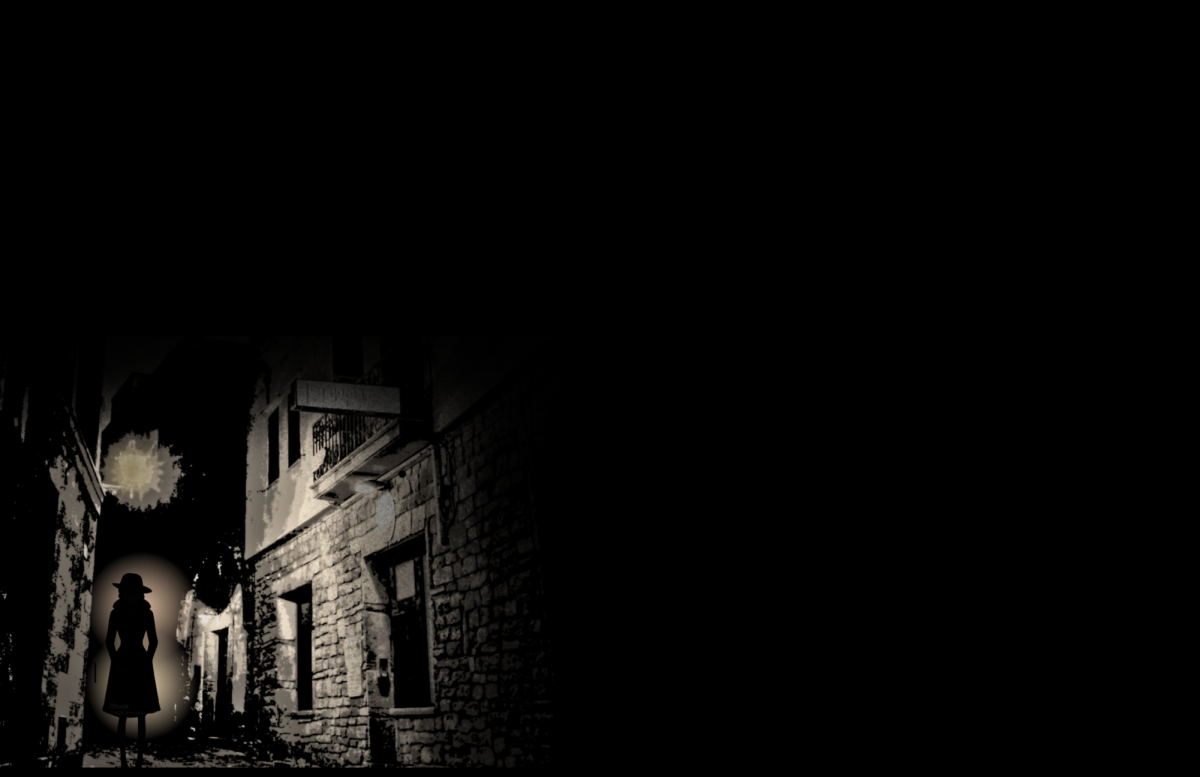It is a universal truth that any critically acclaimed modern show takes an eternity between the end of one season and the beginning of a new one. While this is especially maligned with shows that air on dedicated television stations like Rick & Morty and Game of Thrones, one lesser known example is Netflix’s newly released eight installments of “Castlevania.” This season like it’s predecessor serves as a very loose adaptation of the third installment of the video game franchise of the same name on the Nintendo Entertainment System, “Castlevania III: Dracula’s Curse.”
What’s fascinating about the series is that it’s not explicitly necessary for someone to see the first season in order to understand the second. Rather than revolving much of the story around the conflict between Trevor and the Bishop of Gresit, as was done in the first season, the new season evenly divides itself between the exploits of Trevor’s motley crew of heroes and the political discord in Dracula’s war council. Regarding which is more interesting to watch, the conflicts which occur in Vlad’s court take the cake. While the chemistry shared between Trevor, Alucard, and Sypha can be heartwarming and funny, the drama and tension caused by the rivaling agendas of the antagonists further pits the audience against specific characters.
In the court of Dracula, five principal characters have an impact on the stories progression. Dracula himself serves as the subdued and morose leader. Unlike in the first season where the main emotion he exhibits is unwavering fury towards the human race, he spends almost all of the second season skulking in the shadows of his castle. One character even mentions in a private conversation with a different person that Dracula “doesn’t care;” he wants all the humans dead, but he doesn’t have the will to organize his extermination. While it is frustrating the Count seems so devoid of the intensity and rage he displayed in the first episode of the series, it does fit his character’s monicure as the “Lord of Darkness,” and his lack of drive makes his battle at the end all the more satisfying. The next characters of note, Hector and Isaac, serve as foils for one another. Both are “Devil Forgemasters” who construct Dracula’s army and act as the leaders of his war council. Their tragic backstories which caused them to betray humanity and join the vampires are revealed through numerous flashbacks. In one such recollection, the audience doesn’t even see the unfortunate event that occured to one of the two characters. Instead, they just hear the audio of what happened as the character remembered it, while he is shown staring into the enders of a smoldering fire. While Hector and Isaac rationalize their choices and clearly believe they are acting righteously, one is flawed by his naivete and the other is too loyal to his Lord, and these defects bring both of their downturns by the season’s close. They are like heroes in a villainous role, and that disconnect makes them some of the most sympathetic characters in the show. Of all the vampire generals shown on screen, most have no dialogue. Only two of the hellions ever speak, being the Viking vampire Godbrand and the scheming lady vampire Carmilla. The former is shown in the first episode openingly questioning the rationale of Dracula and Hector and, despite how humorous he is, the audience can not help but find his insubordination despicable. The latter villain is the most duplicitous and frightening in the show, more so than Dracula himself. During the seven episodes she appears in Carmilla undermines every council member to her own advantage and by the last episode is the character poised with the most potential to have their plans go their way.
Although all of the protagonists in the story are respectable, in a reversal of the status quo Trevor Belmont pulls the short stick in regards to likability. While he may have maintained the spotlight in video game “Castlevania III: Dracula’s Curse” as the default character, his high point really occurred in the first season of the series, when he accepted his destiny as a vampire hunter. Now that he has to share screen time with Sypha and Alucard, Trevor doesn’t feel all that necessary. In any case, the proto-romance which develops between him and Sypha is charming. Sypha herself experiences greater change and development than her partner in both love and war, especially in regards to her battle prowess, and it is by one of her actions the protagonists manage to win as swiftly as they do.
Of the three heroes, it is clear that the writers favored Alucard above the other two, as he is written the best and is all around the most appealing person in the show. From his soliloquy in the first episode of the second season, he is presented like a monsterous Hamlet. Both understand fundamentally the moral imperative in killing their kin (Hamlet must murder his uncle to avenge his father, Alucard must murder his father to avenge humanity), but neither young men know if they are truly capable of following through on their deeds. This confused and split nature of Alucard is explored in many other aspects of his character. Although his birth name is mentioned to be Adrian Fahrenheit Țepeș, he takes the label Alucard once he joins Trevor and Sypha, the “opposite of [Dracula]” as he explicitly states. Being a dhampir, a half-vampire (the death of his human mother Lisa drove Dracula to commence the war on Wallachia), he also feels particular shame when he sees the skulls of other vampires in the library under the Belmont estate, and this clearly causes him to question how he should feel towards Trevor. He even existentially questions whether or not he should remain in the human world or enter into a crypt of eternal slumber, just like Shakespeare’s Danish prince.
As with the previous season, other production aspects of the series besides the writing are also top notch. The music as in the last season has remained mostly dramatic and intense, if somewhat unmemorable. That is, except for one piece. During the fight scene near the entrance to Dracula’s castle, any astute fan of the franchise will recognize the remix of the song “Bloody Tears” from “Castlevania II: Simon’s Quest.” Although I would have chosen a piece from Dracula’s Curse like “Aquarius” or “Beginning,” the song they went with works in the context of the series. “Bloody Tears” as a piece of music sounds like equal-part Bach organ composition and rock ballad, which fits the antique settings intense tone.
The animation in the show features for the most part remarkable illustrations, although certain scenes are drawn with distractingly sparse detail. In the second season’s pilot “War Council,” certain cuts of the facial details of the Bishop of Ghent and Lisa look distorted and wonky. In that same episode a cut is made to Godbrand where he looks disinterested in his surroundings and besides moving his lips to speak does not display movement. These examples oppose later illustrations of characters that are intricate and elaborate, full of emotion and tension. One memorable example of this quality is the way Dracula is drawn when cornering Godbrand: despite the Count remaining almost completely immobile, the details the animators added to his fiery eyes, the gothic lines of his cheekbones, and the sharp edges of his suit, ears, nose, and especially teeth serve to elicit a tone of compression when he berates his insubordinate underling.
Overall, the second season of the “Castlevania” anime serves as a fantastic study of a melancholy Lord of Demons who feels obligated to wage a war of vengeance and his son who feels equally obligated to stop him. Whether or not you are a fan of the “Castlevania” game franchise or a fan of anime, it’s an imperative to watch this show. If you haven’t seen the first season, I’d recommend starting there and working your way through in chronological order, although such conduct is not a necessity. For anyone looking to satiate their blood-lust while “Game of Thrones” toils through production or are looking for a show besides “House of Cards” that deals with political intrigue, I can offer no better recommendation for a series than one about Dracula Vlad Țepeș, King of the Vampires.
Castlevania Anime Raises Stakes Again in Netflix Productions
Review of Season 2 of the Castlevania anime on Netflix
Categories:
0
Navigate Left
-
 UncategorizedTrinity Prep Saints vs. Seven Rivers Christian School Warriors
UncategorizedTrinity Prep Saints vs. Seven Rivers Christian School Warriors -
UncategorizedCommentaaron
-
 UncategorizedNothing To Laugh At
UncategorizedNothing To Laugh At -
UncategorizedCommentaaron
-
 UncategorizedSkinks Soar to Third at State Envirothon
UncategorizedSkinks Soar to Third at State Envirothon -
 UncategorizedLuau Night
UncategorizedLuau Night -
 UncategorizedSenior Dog Day
UncategorizedSenior Dog Day -
 UncategorizedBeyond Hustle Culture
UncategorizedBeyond Hustle Culture -
 Uncategorized"Shots" Unraveled
Uncategorized"Shots" Unraveled -
 UncategorizedA Virtual Crisis
UncategorizedA Virtual Crisis
Navigate Right
About the Contributor

Joseph Paoli, Staff Writer
Joseph Paoli is currently a senior and has been on the Trinity Voice for two years. He is a writer for the News department this year and was a Lifestyles writer last year. He enjoys cooking Italian food and running. Joe plays viola with the Metropolitan Area Youth Symphony on Sundays. As of the time of this bio’s publication, he is playing “Fire Emblem: The Sacred Stones” for the Game Boy Advance. Feel free to message Joseph at [email protected].




